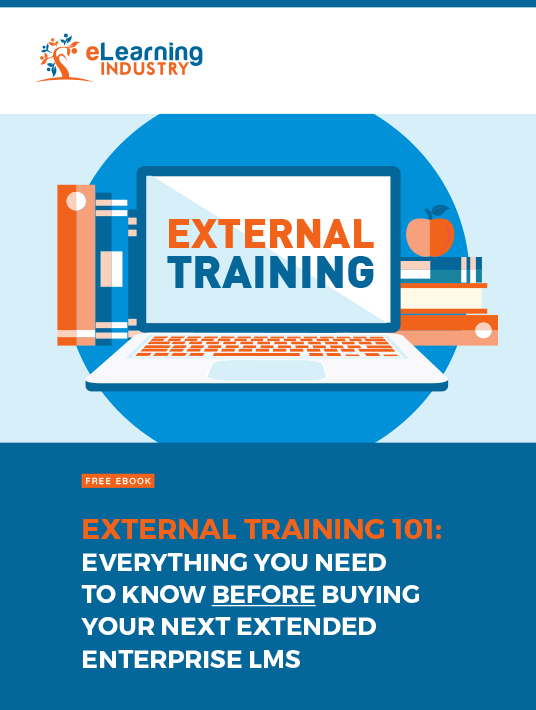How To Monitor External Partner Performance With An Extended Enterprise LMS
Franchising is an effective way to maximize profits through minimal effort. Hiring non-employee contractors and distributors helps too, as it minimizes overheads. Since they are not employees, their benefits and taxes are different. You don’t necessarily need to provide permanent resources or office space, which cuts costs. You do, however, need to equip them to sell effectively. The more product they move, the better for you. An extended enterprise LMS allows you to train external partners without increasing your online training budget. But how can you be sure it’s working?

1. Check For Redundancy
Like all forms of online training, it helps to begin with individual surveys. Find out what each external partner already knows and what they’d be interested in learning. Build up a comprehensive list and use it to generate online training content from your primary Learning Management System. You might have a standard structure for your external partners, but it probably needs tweaking.
At various stages of the online training course, stack your online training content against the pre-stated preferences of your online learners. Check to see if you’re wasting time on the knowledge they already have. Beef up the areas that are lacking and gloss over familiar sections, or leave them out altogether. Depending on the nature of your product/service, emphasize on relevant hard or soft skills.
2. Do A SWOT Analysis
The concept of SWOT may seem outdated, but it still holds water. Analyze your online training material, testing for its strengths, weaknesses, opportunities, and threats. Break this down into the simplest possible format, ideally in bullet points. You could also display your SWOT results visually. Graphics are often easier to read and comprehend. Once it’s all down on paper, you can deal with each bit individually. Use each component to evaluate the efficacy of the online training course and make any necessary changes. This analysis shouldn’t be a one-off occurrence. Repeat the process at intervals to see if there are specific sections of the online training that can benefit from adjustment. Test both the online training course and its participants.
3. Review Your Learning Objectives
This may seem obvious, but not many people test learning objectives before they jump in. At the start of eLearning course development, be clear about what you’d like your external partners to learn. Describe learning objectives and list them in brief, affirmative statements. This not only helps you curate online training material, but it also provides a useful performance checklist. Targets may include sales skills, negotiation, persuasion, customer care, and conflict resolution. In terms of product/service, generate a list of questions customers might ask. Be as thorough as possible, ranging from the banal to the technical. By the end of the online training course, trainees should have all these answers. They should know how to respond professionally, keeping customers at ease. Teach them how to serve potentially hostile customers, too.
4. Inspect Performance Metrics
By their very nature, online training courses have inbuilt metrics. You can tell how long it took an online learner to finish a test, and which questions they struggled with. You can see who completed the online training course, who dropped out and at what point they gave up. You can find out the areas where your online learners sought additional reference material from the web. Gather this data and feed it through your evaluation pipeline. It will show you how helpful the online training course really was. It will also point out the areas that need improvement. You might require a small tweak or a complete overhaul. Don’t just run metrics for their own sake. Compile information with specific goals and targets in mind.
5. Ask Your External Partners
The surest way to find out if your online training course is working is to ask your external partners. The trick is to ask the right questions. Unless you are targeted in your queries, your external partners may simply tell you what you want to hear. Avoid generic questions like "Did you enjoy the online training course?" or "Was it helpful?" Use a more directed line of thinking. Fruitful inquiries include "Tell me five things you learned that you didn’t know before". You might ask, "If a client said xyz to you, how would you respond?", or "What would what you tell a client if they requested abc?". These questions test acquired knowledge and are a good way to see whether the online lessons sank in. They also prompt application of what was learned.
6. Evaluate Savings
Using a before-and-after model can be helpful in identifying the benefits of your online training. Compare customer engagement time. How long did external partners spend with customers in the past? For how long did customers browse before they made a purchase? How much did your partners interact with window shoppers? How many of those shoppers converted? You can also gauge the cash cost. The point of extended enterprise LMS is to stretch online training without increasing budgets. To check the financial value of online training, you can compare sales volumes. Did they rise or drop after the online training course? By how much? How significant is the difference once you factor in things like season, time or staff experience?
Installing an extended enterprise LMS is all well and good, but you need to check it periodically. It helps to confirm whether your extended enterprise LMS is successful and, if it’s not, tweak it accordingly. Look through your online training material to see if there are any redundancies. Test for strengths and weaknesses. Evaluate the success rate of your learning objectives. Study the LMS metrics and analytics for both individual and overall performance. Ask your external partners how they like the online training course. Finally, tabulate how much time and money you’ve saved. It’s the simplest way to see if your online training was really worth it.
Want to learn more about the possibilities of an Extended Enterprise LMS? Download our free eBook External Training 101: Everything You Need To Know BEFORE Buying Your Next Extended Enterprise LMS to learn how an extended enterprise LMS can help you increase profits and partner productivity. It also features tips to choose the best pricing plan for your organization and criteria to select the ideal extended enterprise LMS platform.









